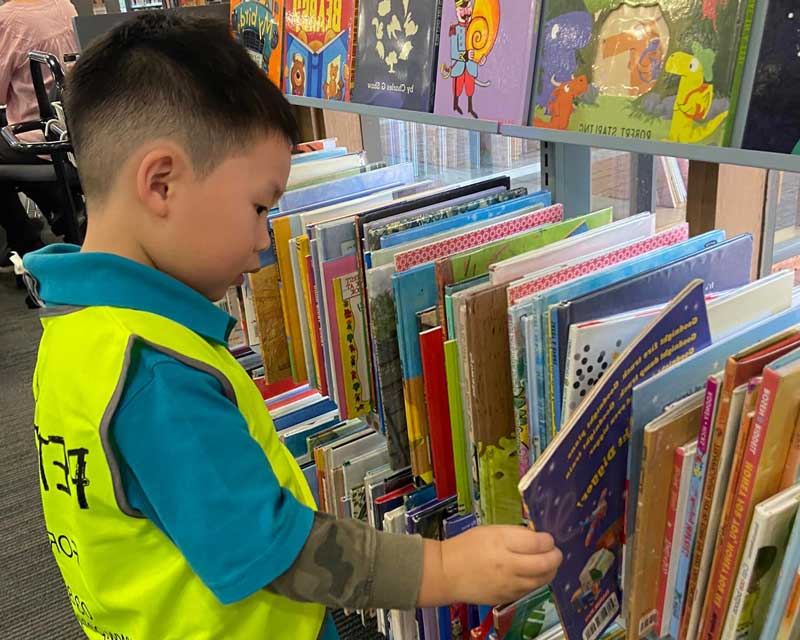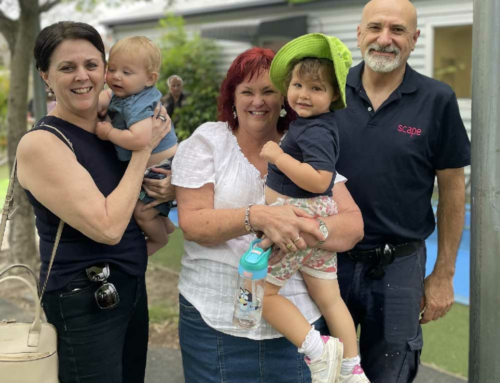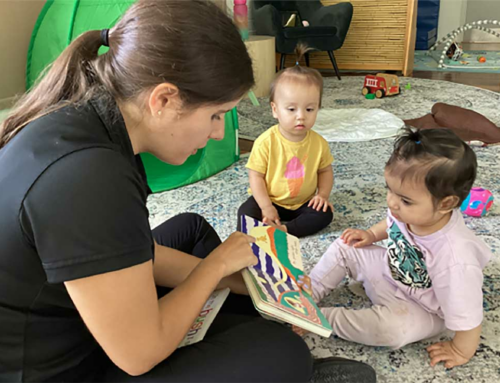Storytelling for children or at any age is a shared experience between those telling the story and its recipients. There are many forms of storytelling, some of the earliest being oral, dance and art. Today, traditional forms blend with digital storytelling found in mixed media, video, animation and games.
Traditional forms of storytelling continue to connect families and provide children with rich information about the world around them. For generations, people have shared stories to pass on insights, and community values, build language and more.
Through compelling storytelling, history comes alive with inspiring lessons on morality, life skills and creativity. Different storytelling techniques appeal to children’s interests through song, art, movement, play-acting and oral tales.
Children’s storytelling is more than reading books or hearing a tale with the use of spoken language. Reading books encourages a child’s curiosity, but there are many ways to tell a tale. With the popularisation of electronic entertainment, storytelling has found new digital forms of expression like audio stories that complement and revitalise traditional methods.
Whether reading from a beloved book or taking your kids on an imaginative journey through improvised playacting scenes, sharing the art of storytelling with children can be one of the most rewarding experiences for any family.
Come with us as we share the magic of storytelling in its traditional forms:
- Oral traditions.
- Book reading.
- Storytelling with songs.
- Improvised plays or roleplaying.
- Storytelling through dance and movement.
- Telling stories through art.
- Benefits of storytelling in the early years.
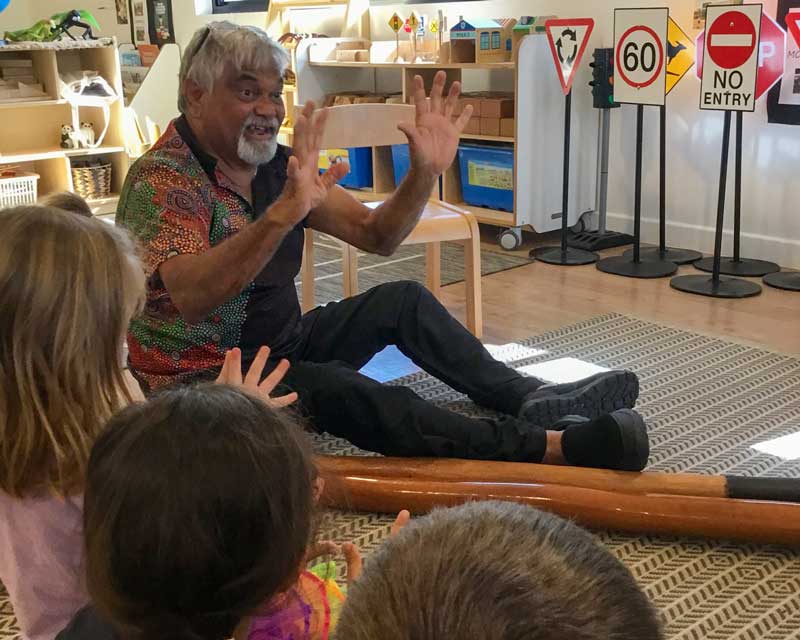
The ancient art of oral storytelling
Oral traditions are an intimate art form used frequently before the invention of the printing press. It is still used today in many communities to impart knowledge, history, moral values, culture and personal stories.
Oral storytelling is a perfect method for families to share with their children as it can combine words, songs, storytelling movements and sometimes art to tell a story. It can even help children learn new words!
Sharing oral stories with babies, toddlers and preschoolers can help them:
- Develop language and listening skills
- Build imagination
- Understand their world
- Foster strong bonds by providing a platform for meaningful conversations
- Spark new interests
Oral traditions can provide children with a sense of security as they learn about the world from a safe space. Oral stories can share knowledge about a family history, traditions and values.
Do you tell real-life stories of your childhood, family history and child’s beginnings? Children are eager to hear their family’s personal stories, including stories about themselves. Hearing personal stories about themselves and their family strengthens a child’s sense of belonging and identity.
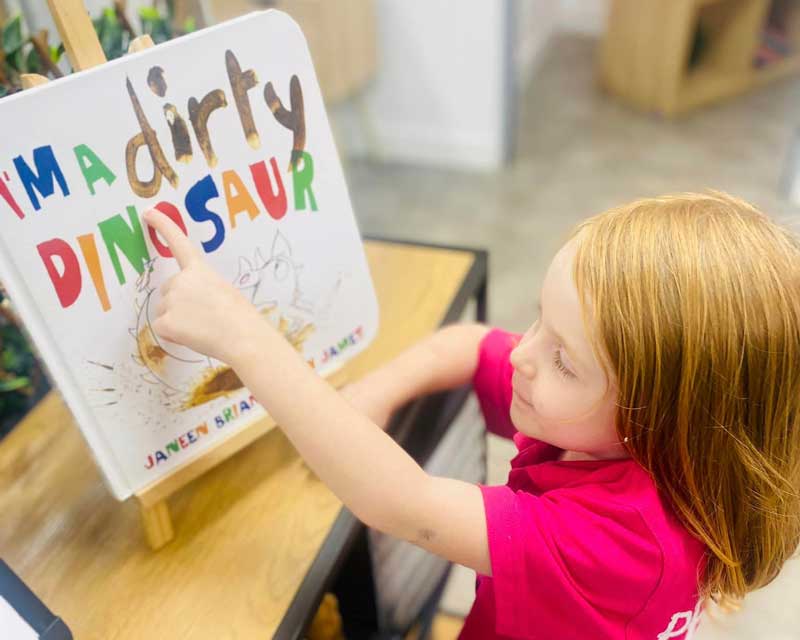
Reading storybooks
Books are treasured for bringing tales to life. Reading storybooks is an excellent way for children to enjoy the magic of storytelling. Books contain alliteration, colourful images, sensory elements, rhyme and rhythm. They ignite children’s interests.
Reading picture books to children is a great way to help them develop their language skills, imagination and creativity. You can point to the images and ask questions like, “What do you think will happen next?”
You can also encourage your child to follow the words in a picture book as you read them out loud to help with language development. Toddlers delight in turning board books‘ heavy cardboard pages, and it helps them practise their fine motor skills.
Children love learning through play. Leave some treasured picture books out for children to look through and promote their interest in reading. They can look through books’ illustrations to recall the story and improve their memory skills.
Celebrate the wonderful world of books by reading more stories to your child. You can also encourage children’s interest by joining your local library or participating in Australian Reading Hour.
Some storybook recommendations that the children are reading at Petit Early Learning Journey:
- I’m a Dirty Dinosaur by Janeen Brian and illustrated by Ann James – from Petit ELJ Burdell
- Awesome Emu by Gregg Dreise – from Petit ELJ Caloundra
- The Big Book of Bugs by Yuval Zommer – from Petit ELJ Coffs Harbour.
- Fancy Nancy Butterfly Birthday – from Petit ELJ Clifton Hill
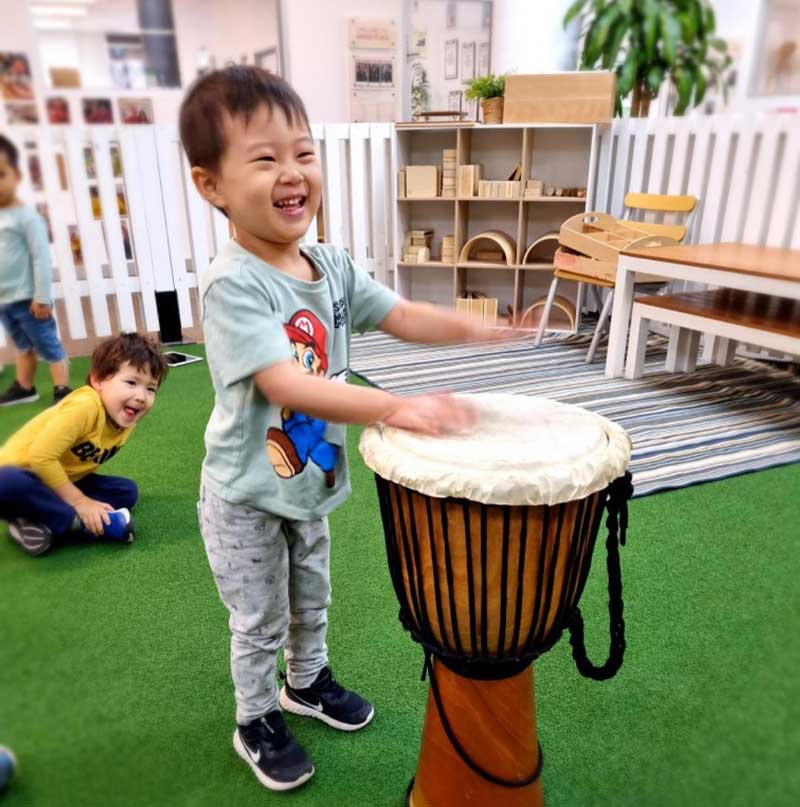
Storytelling through song and music
How often have you listened to a favourite song, sung along and discovered a positive shift in mood or a spark of inspiration? From a young age, we associate music with emotions. Music helps children connect with their feelings and create meaning-making.
Everyone loves a good story, and songs that tell stories can keep children engaged for hours. Ballads, nursery rhymes, and other musical forms tell compelling stories, entertain young minds and continue to resonate with us as we grow.
Storytelling experiences told with music can also boost a child’s foundational early literacy and memory skills. Many nursery rhymes use a poetic format to tell stories with a core message or an amusing story. These include:
- Incy Wincy Spider
- The Wheels on the Bus
- Three Blind Mice
- Old Mother Hubbard
- One, Two, Buckle My Shoe
- Hey Diddle, Diddle
- Humpty Dumpty
- Little Bo Peep
- Once I Caught A Fish Alive
- Jack and Jill
Some children may find singing about stories more exciting than books – although combining them makes a magical experience.
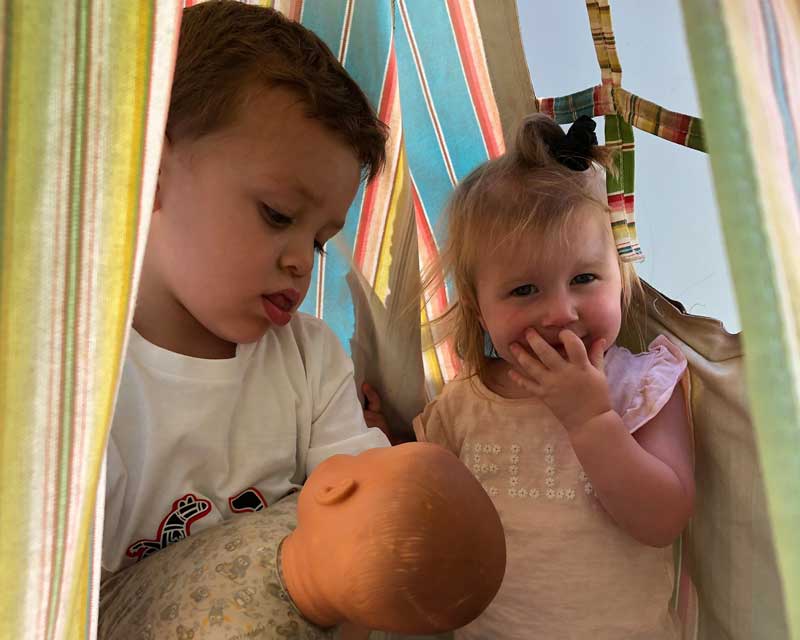
Improvising stories or roleplaying
Children turn well-told stories they hear and read into homegrown plays. When children put on a play, the planning is as engaging as acting it. There’s the dressing up, hiring of dolls and plushies as cast members and inviting every family member to the opening night of their favourite tale.
Children get immense enjoyment when they act out their favourite stories. You may get invited to narrate the story as they and their friends or siblings perform. What is a 5-minute story can quickly turn into a 2-hour or more improvised play.
How to encourage your child to role play their favourite stories:
- Have a basket with costume ideas, such as preloved clothes, scarves, hats, masks and other accessories
- Extend the experience with prop making, mask making, ticket making and selling, and creating theatre programs
- Give them the tools and let their ideas flourish as they work through the storytelling process
- Participate in the play when invited or assume the role of an excited audience member
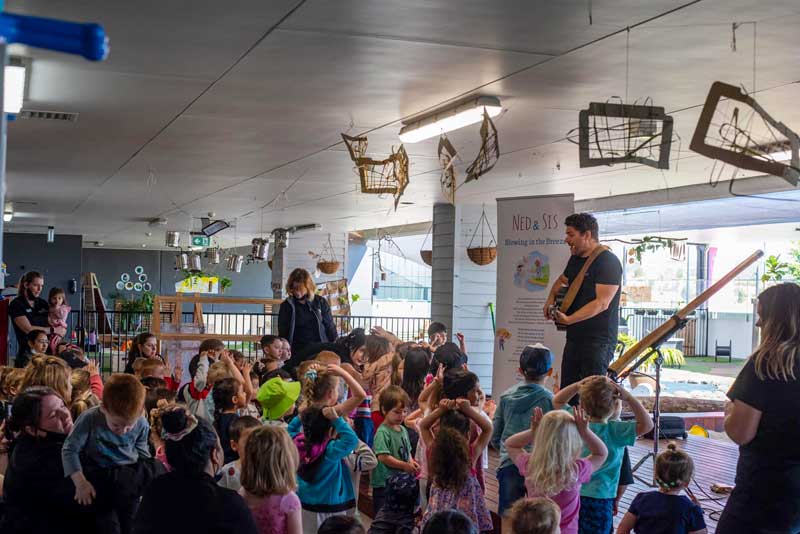
Storytelling through dance and movement
Dance is more than moving to a tune. It can be a powerful tool for telling stories. Indigenous communities like Australia’s First Nations Peoples have used dance and movement for thousands of years to tell stories and pass them down through generations.
Promote your child’s health and physical literacy with stories told through dance and movement:
- Select a book you have been reading together.
- Choose music or sound effects to suit the story. For example, you could play live music with instruments like drums, rattles, xylophones, recorders, pots and pans.
- Encourage your child to create movements that represent different parts of the story.
- Match these movements with the sound effects of one of the instruments.
- Inspire your child to move when they hear the related sound.
- Connect the sounds and movement to the story arc.
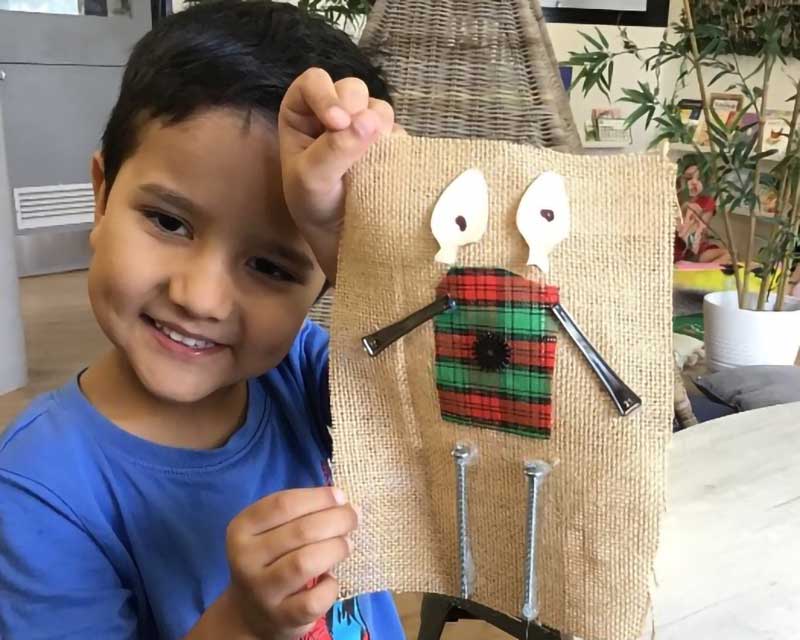
Telling stories through art
Art is another traditional method where the power of storytelling communicates ideas to one or more viewers. For thousands of years, people have told stories through art. Rock art is one of the oldest art forms.
Art creation is an exciting experience in early childhood. It can be transient, permanent and open-ended. Open-ended art focuses on the process rather than the end product.
Children’s art uses paints, crayons and colouring in pencils, chalk, clay, open-ended loose parts, natural materials like shells, sticks and leaves, recycled parts and anything they can safely use. Children should be free to explore materials as they see fit.
When it comes to telling stories with art, there are no bounds. Art is a helpful tool for children to express their feelings, thoughts and creativity freely. Likewise, they can learn how to communicate ideas, interests and imagination through art.
Art has many benefits for children, such as promoting colours, fine motor skills and language. When it comes to a child’s art and the stories it tells, the answer lies in the questions we ask. To discover more, ask questions like:
- What can you tell me about your art?
- How did you come up with the idea?
- Why did you choose these materials?
- Why did you place this here?
- How did you create this effect?
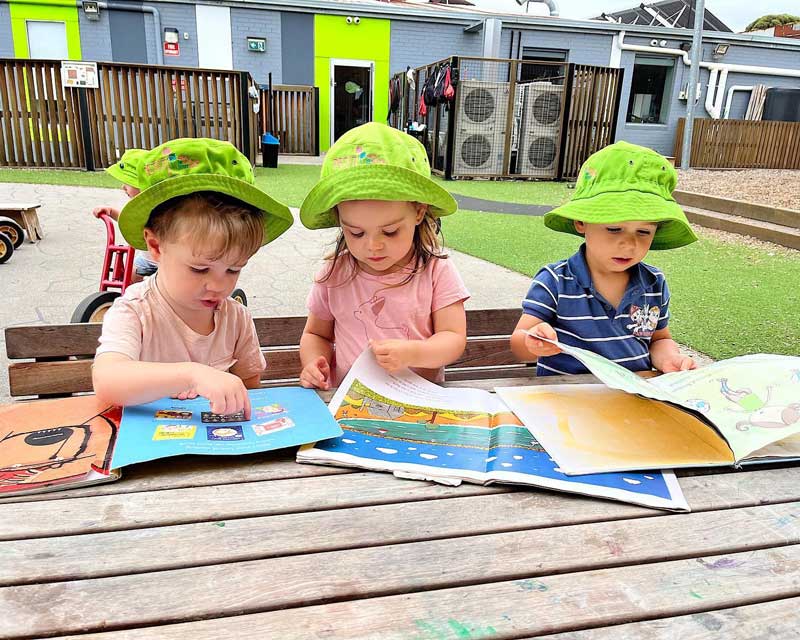
The benefits of storytelling in the early years
The benefits of storytelling in early childhood include multi-modal projects that inspire children’s creativity to express their thoughts and ideas in different ways. There are many creative ways to tell a successful story, from oral storytelling to singing and art.
The magic of storytelling helps children to learn new things about themselves, their families, different cultures and values. It stimulates their curiosity, develops their brain and cognitive abilities, and nurtures language development and fine motor skills.
How we express the art of storytelling can spark conversations and discoveries about the underlying messages in stories such as:
- Learning about Indigenous cultures
- Sustainability and a love for nature
- The structure of language
- Storytelling practices
- Different art forms
- Caring for animals and friendships
- Building a sense of identity and belonging
- Exploring family dynamics
- Encouraging well-being and nutrition
- Sharing history
- Discovering children’s ideas and interests
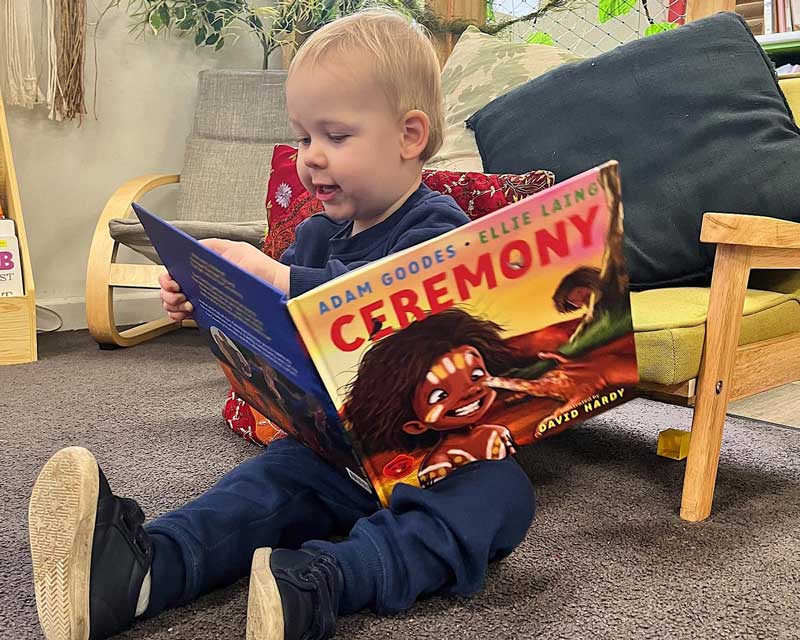
Share the magic of storytelling with Petit Early Learning Journey
Reading storybooks is a favourite experience at Petit ELJ. We enjoy sharing stories and extending children’s interests through storytelling and its many varied forms such as singing, movement, art and roleplay.
Our teams encourage children to be autonomous and construct their own knowledge by providing open-ended resources, listening to their voices and inspiring each child to share their ideas, thoughts and interests. Are you ready to inspire your child with the magic of storytelling and Petit ELJ?
